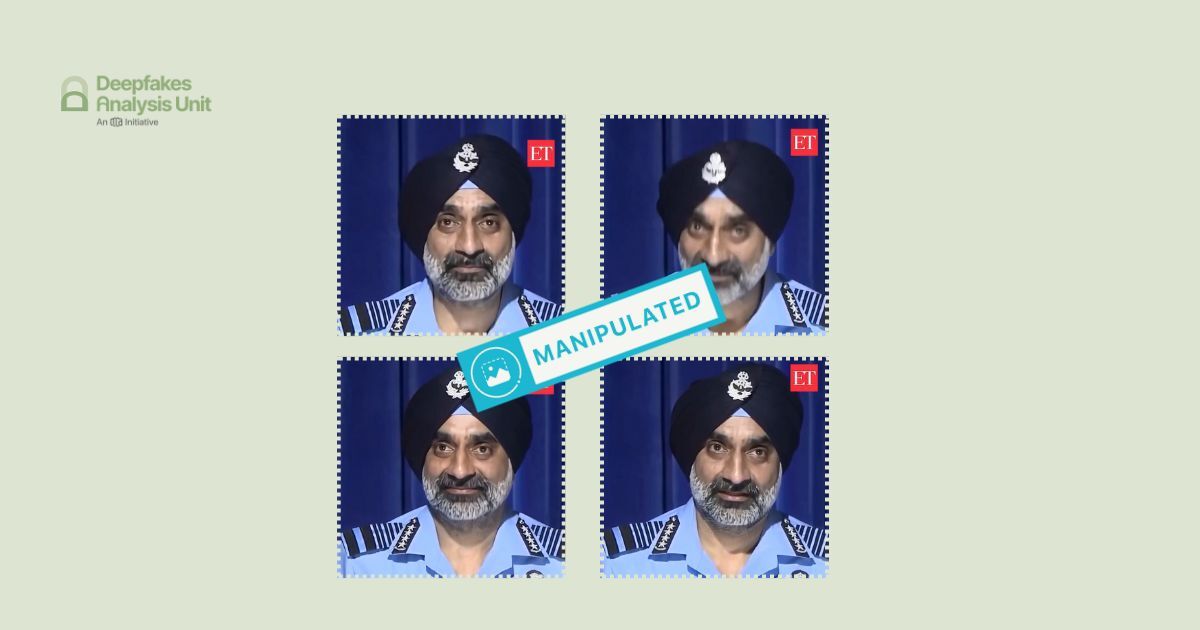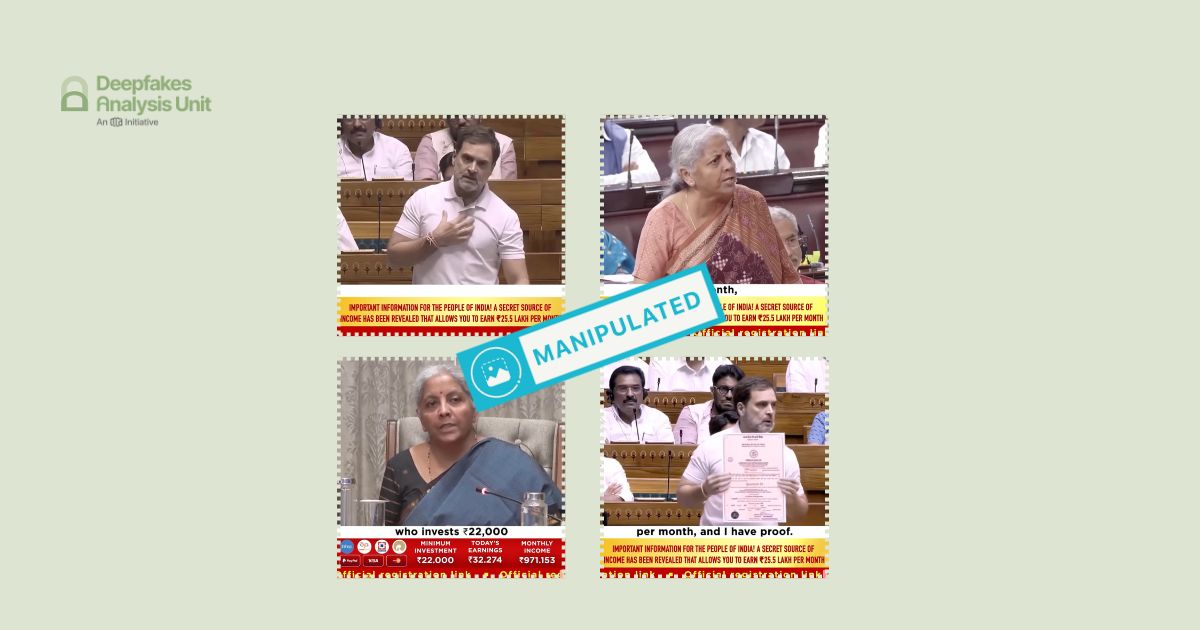The Deepfakes Analysis Unit (DAU) analysed a video which supposedly shows Prime Minister Narendra Modi apparently admitting to having hired Taliban to attack Pakistan. After putting the video through A.I. detection tools and getting our expert partners to weigh in, we were able to conclude that the video was fabricated using synthetic audio.
The one-minute and 26 seconds video, primarily in Hindi with some Urdu words, was escalated to the DAU by a fact-checking partner for analysis. The video, embedded in a post on X, formerly Twitter, was published on Oct. 21, 2025 from an account with the display name of “Hawk’s Eye”. The account bio includes details such as “tracking conflict with precision” and mentions “United Arab Emirates” as the location.
Text in English accompanying the video read: “Breaking News: Indian journalist Geeta Biswas releases censored portion of Narendra Modi's speech which was not allowed to air on any Indian media. Modi explains the next strategic advances in full detail.” The video has so far received about 30,000 views.
We do not have any evidence to suggest if the video originated from the aforementioned account or another account on X or elsewhere.
Mr. Modi has been captured in a medium close-up in the video. He appears to be standing and addressing an audience as two microphones can be seen before him. The cutaways in the video seem to indicate that the audience comprises officers of the Indian Navy.
Modi can be seen wearing an overall, one of the working uniforms of the Indian Navy. His backdrop looks sky blue with combat military equipment visible toward the left of the video frame. In the foreground a box-like wooden object jutting out in between the microphones is visible. A jet of the Indian Navy’s Air Arm fleet can be seen in the backdrop of some of the audience clips. A logo resembling that of The Tribune, an Indian English language daily, appears in the top-right corner of the video frame.
A male voice in Hindi recorded in first person over Modi’s video track announces that no “Indian soldier would now be martyred at the border” as India has “hired the Afghan Taliban as servants” for the sake of the army. The voice also claims that Afghanistan’s foreign minister pleaded with Dr. Subrahmanyam Jaishankar, India’s External Affairs Minister, to get introduced to Modi.
The same voice further adds that India would use the Afghans to fight Pakistan as Afghanistan is a part of the “map of undivided India”. It adds that the “Afghans take some money from us”, fight Pakistan, and destroy each other.
The overall video quality is poor. Modi’s mouth region seems to blur in several frames and his body language and gestures look unnaturally restricted. His teeth appear blurred in some frames and seem to disappear and reappear throughout the video. However, his lip movements and the words heard in the audio track appear to match.
Garbled characters are visible on Modi’s uniform in place of his name tag. The insignia on his cap—Indian Navy’s crest—appears to change shape in various frames in the video; the Indian national emblem and the anchor on it are misrepresented.
All the visual oddities highlighted above point to signs of possible digital manipulation in the video.
The voice attributed to Modi in the video sounds slightly similar to his real voice as heard in his recorded speeches available online. The cadence and intonation characteristic of his style of delivery are not present in the video, though there are pauses between words similar to those heard in human speech. The audio track also has words in chaste Urdu, which is uncharacteristic of the prime minister’s choice of language for a public speech.
A faint static noise can be heard throughout the audio track. But for the thundering applause at the end of the video, there is no ambient sound captured in the audio track even as the cutaways seem to indicate a big audience.
We undertook a reverse image search using screenshots from the video and traced this video published from the official YouTube channel of The Tribune on Oct. 20, 2025. (A shorter version of this video was also published from the prime minister’s official YouTube channel the same day. The duration of the video on The Tribune’s YouTube channel is longer as the same video has been looped.)
Modi’s clothing is identical in the video we traced as well as the one under review but for the name tag and the crest of the Indian Navy on his cap. The backdrop in the two videos is similar though it appears to be slightly cropped in the video under review. However, his body language is different in both the videos.
The words heard in the video we reviewed are not part of the video we traced, which too is in Hindi. There is no static noise in the source video, it also does not have ambient sound but for the loud sound of applause from the audience; small clips featuring the audience seem to have been lifted from this video and used to create the manipulated video.
The crest of the Indian Navy on Modi’s cap is not misrepresented in the source video. The Hindi words for “Prime Minister” and “Indian Navy” are embroidered on the prime minister’s cap— to the left and right side, respectively. This detail is not visible in the manipulated video because of the poor video quality and also because he seems to be looking straight without moving his head in either direction.
Modi’s body language is more relaxed in the original footage, his hands move in an animated manner, unlike the case in the doctored video. There are very short clips of Modi in the source video where his body language is somewhat similar to that in the doctored video. However, the manipulated video shows no visible jump cuts or transitions and looks fairly seamless, which would not have been possible if shorter clips had been stitched together to create his video.
A glass of water is partially captured in the frame as part of the foreground in the source video, which carries a text graphic in the top-left corner crediting the PM’s YouTube channel for the footage; a thumbnail image of the prime minister is visible in the bottom-right of the frame. None of these elements are part of the manipulated video.
In the top-right corner of the video frame, logos of The Tribune alternate between those representing their English, Hindi, and Punjabi publications. Each time the logos switch there is a flash of blue that appears in place of the white background against which the logos are set. The logo seen in the doctored video is identical to the one representing their English publication.
To discern the extent of A.I. manipulation in the video under review, we put it through A.I. detection tools.
The voice tool of Hiya, a company that specialises in artificial intelligence solutions for voice safety, indicated that there is a three percent probability that the audio track in the video was generated or modified using A.I.
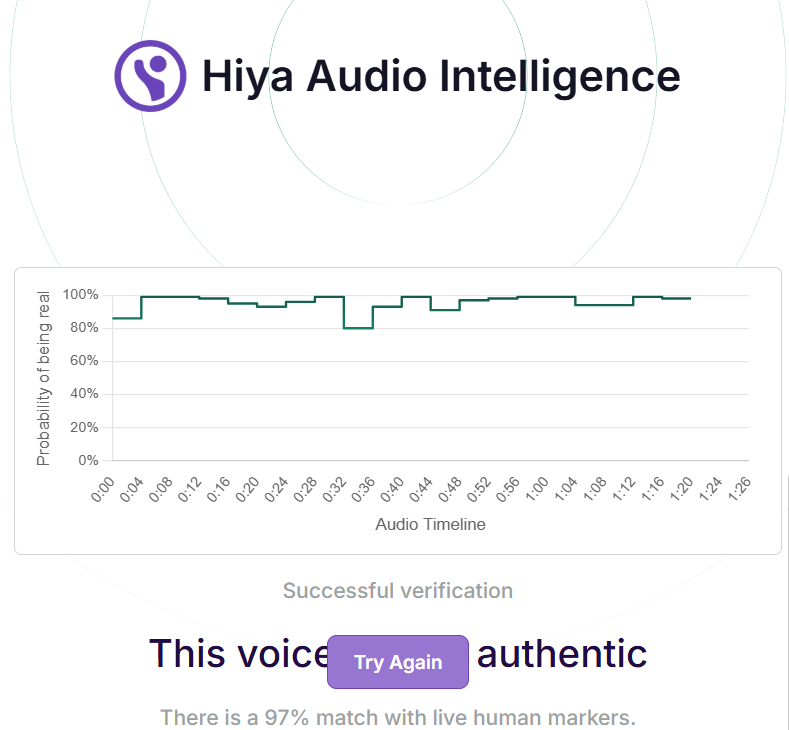
Hive AI’s deepfake video detection tool highlighted several markers of A.I. manipulation in the video track. Their audio detection tool indicated that most of the audio track was not A.I.-generated but for a 20-second segment.
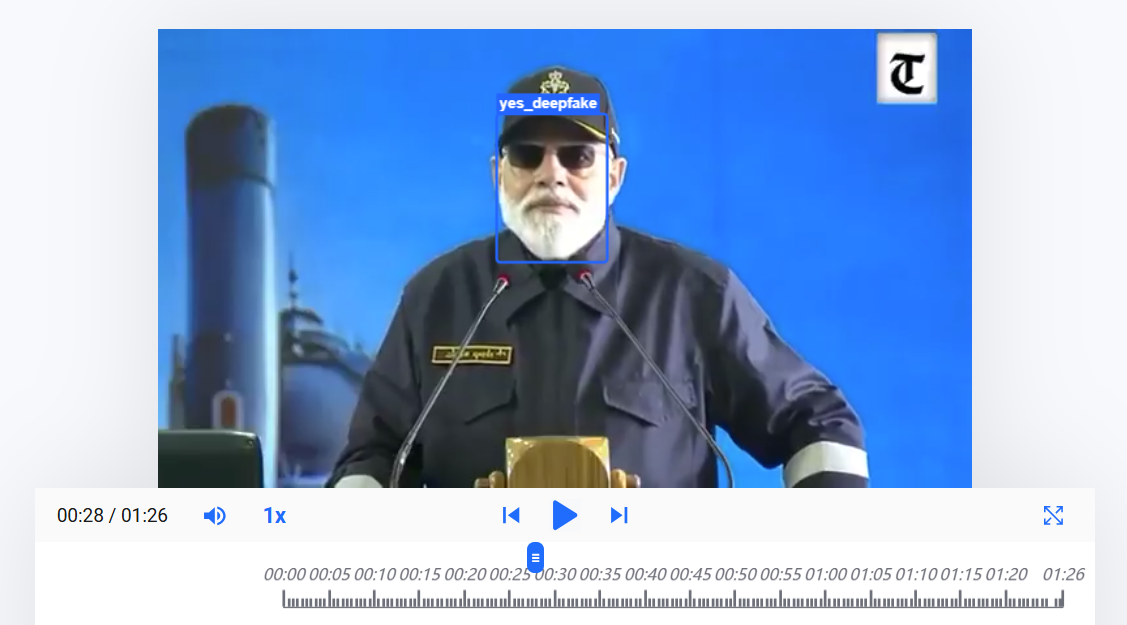
We ran the audio track through the advanced audio deepfake detection engine of Aurigin AI, a Swiss deeptech company. The result that returned indicated that 67 percent of the audio track is A.I.-generated. The tool highlighted segments in the middle and the second half of the audio as generated.
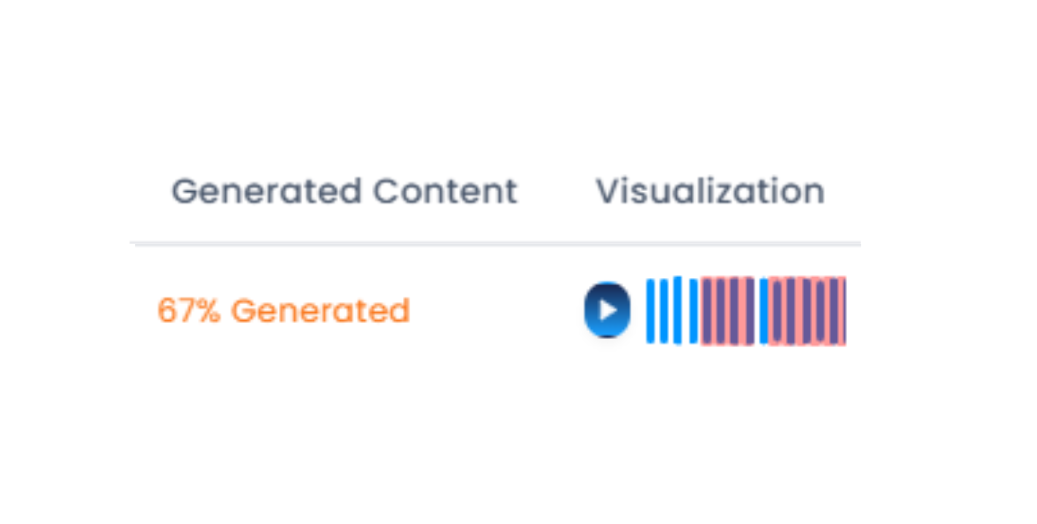
We further put the audio track through the A.I. speech classifier of ElevenLabs, a company specialising in voice A.I. research and deployment. The results indicated that it was “unlikely” that the audio track used in the video was generated using their platform.
However, when we reached out to ElevenLabs for a comment on the analysis, they told us that based on technical signals analysed by them they were able to confirm that the audio track in the video is synthetic or A.I.-generated. They added that they have taken action against the individuals who misused their tools to hold them accountable.
To get an analysis on the video we reached out to ConTrails AI, a Bangalore-based startup with its own A.I. tools for detection of audio and video spoofs.
The team ran the video through audio and video detection models. The results that returned indicated signs of A.I. manipulation in both the video and the audio track.
They stated that lip-sync technique was used to synchronise the lip movements of the speaker with the speech. They further noted that the voice heard in the audio track matches with the real voice of the subject, indicating that voice cloning was used to create the audio. According to them the highly monotonous sound profile also points to A.I. manipulation.
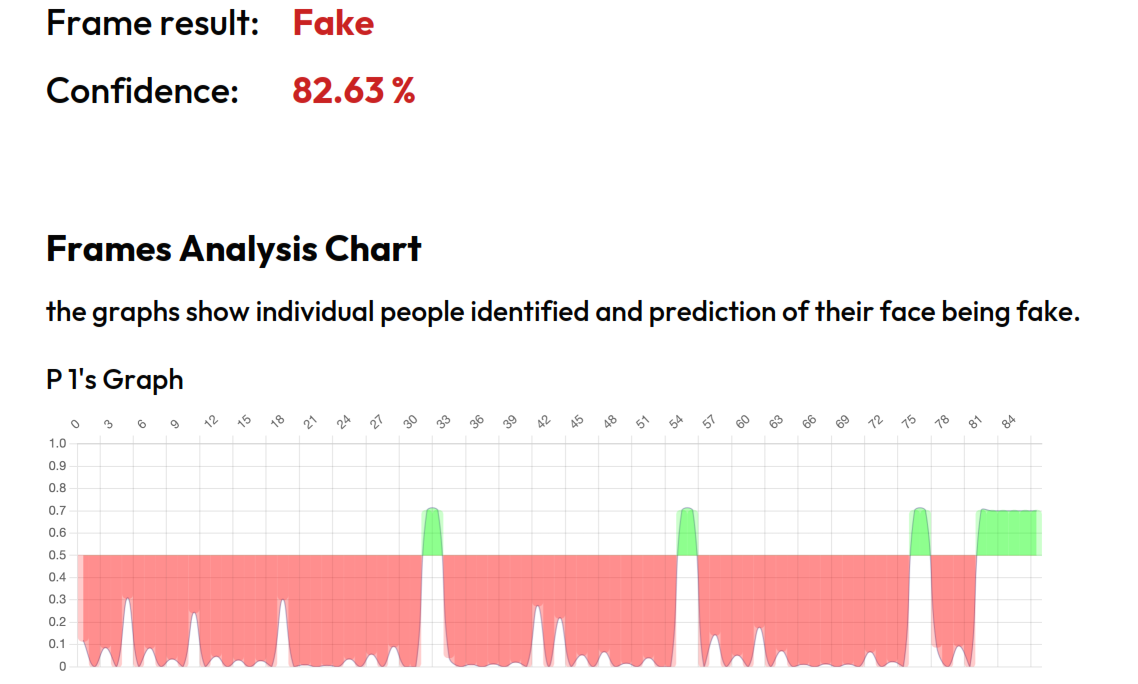
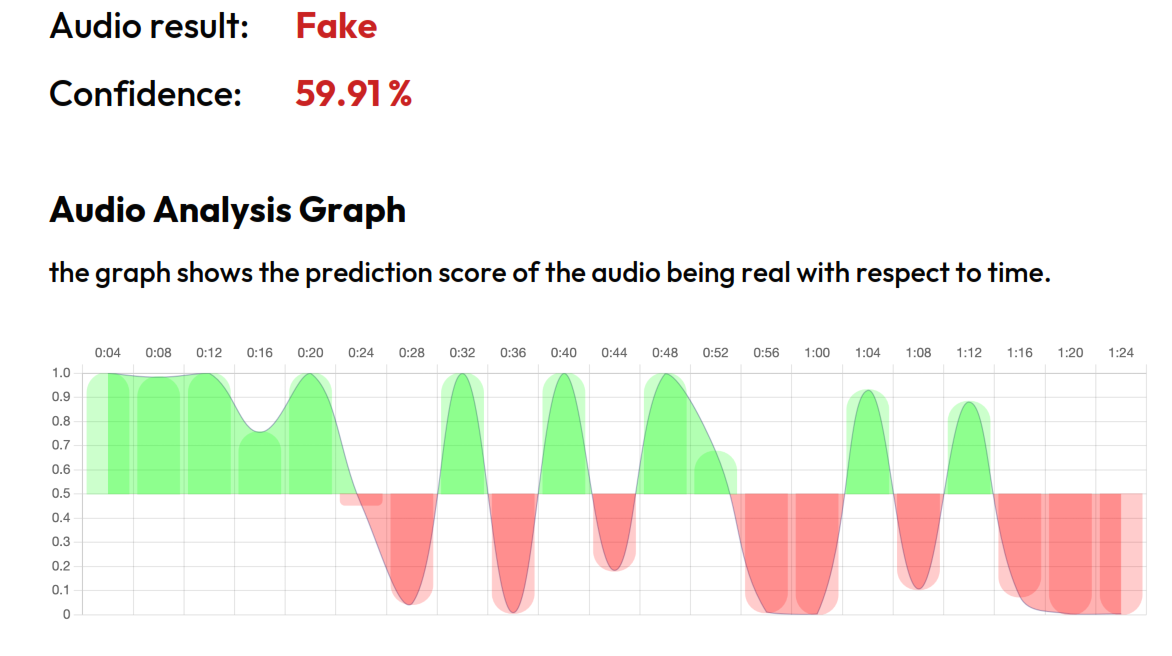
To get another expert analysis on the video we reached out to our partners at RIT’s DeFake Project. Kelly Wu from the project shared a video, which carried the original footage. Drawing a comparison between the videos she noted that the most telling sign of fakeness is the constantly changing name tag and the seal on the cap worn by Modi.
Ms. Wu added that though the video quality isn’t very high but on a closer look at the visuals as the video progresses, the lines in both the seal and name tag tangle quite a bit. She points to this being a common artefact in the recent videos we escalated to them.
Saniat Sohrawardi from the project noted that when comparing the manipulated video with the real video, there is a difference in the voice and that it would be a better artefact for people who are familiar with Modi’s voice and mannerisms.
On the basis of our observations and expert analyses, we can conclude that the video is fabricated. An A.I.-generated audio clip was used with Modi’s visuals to peddle a false narrative about India paying the Taliban to fight Pakistan.
(Written by Debopriya Bhattacharya and Debraj Sarkar, edited by Pamposh Raina.)
Kindly Note: The manipulated audio/video files that we receive on our tipline are not embedded in our assessment reports because we do not intend to contribute to their virality.
You can read the fact-checks related to this piece published by our partners:







